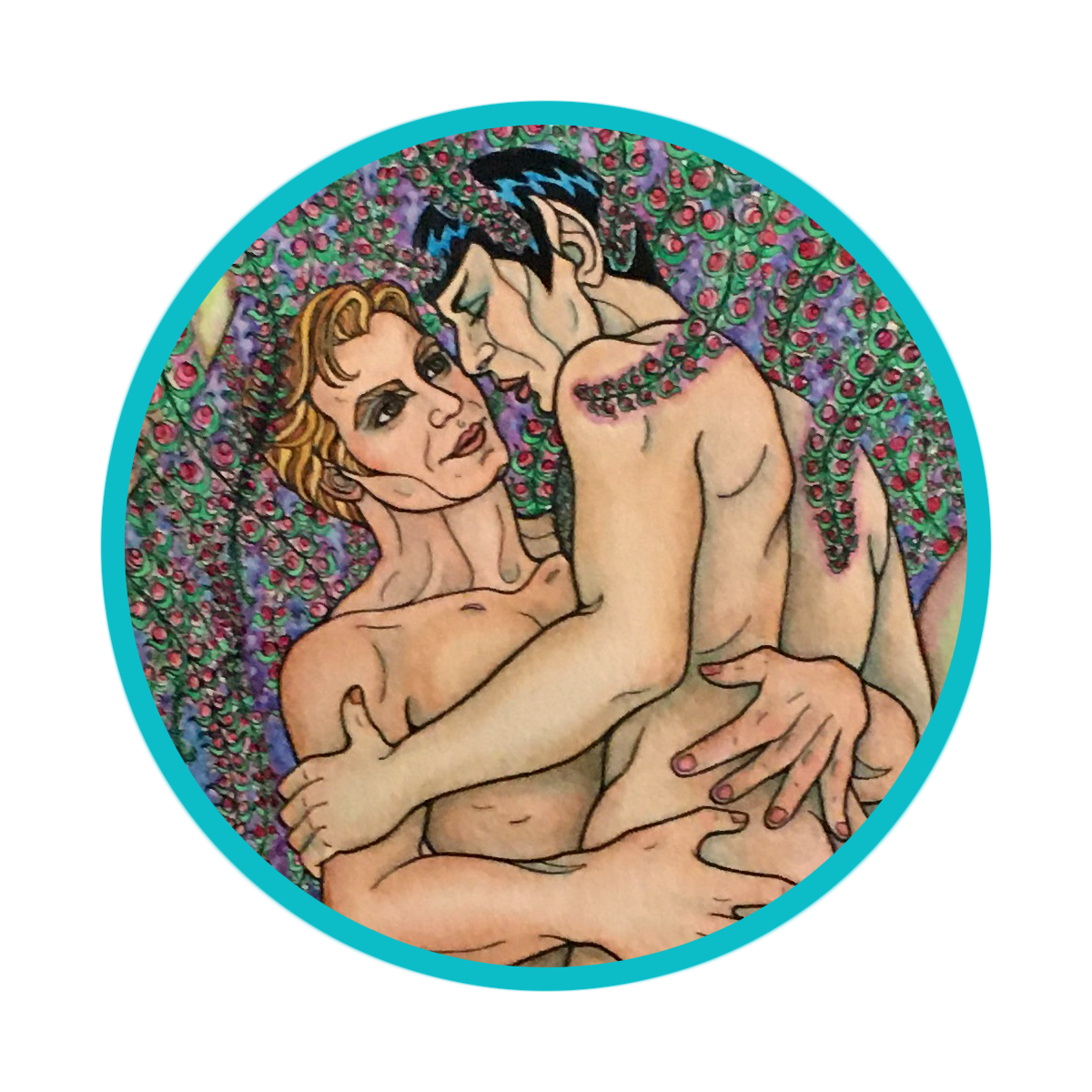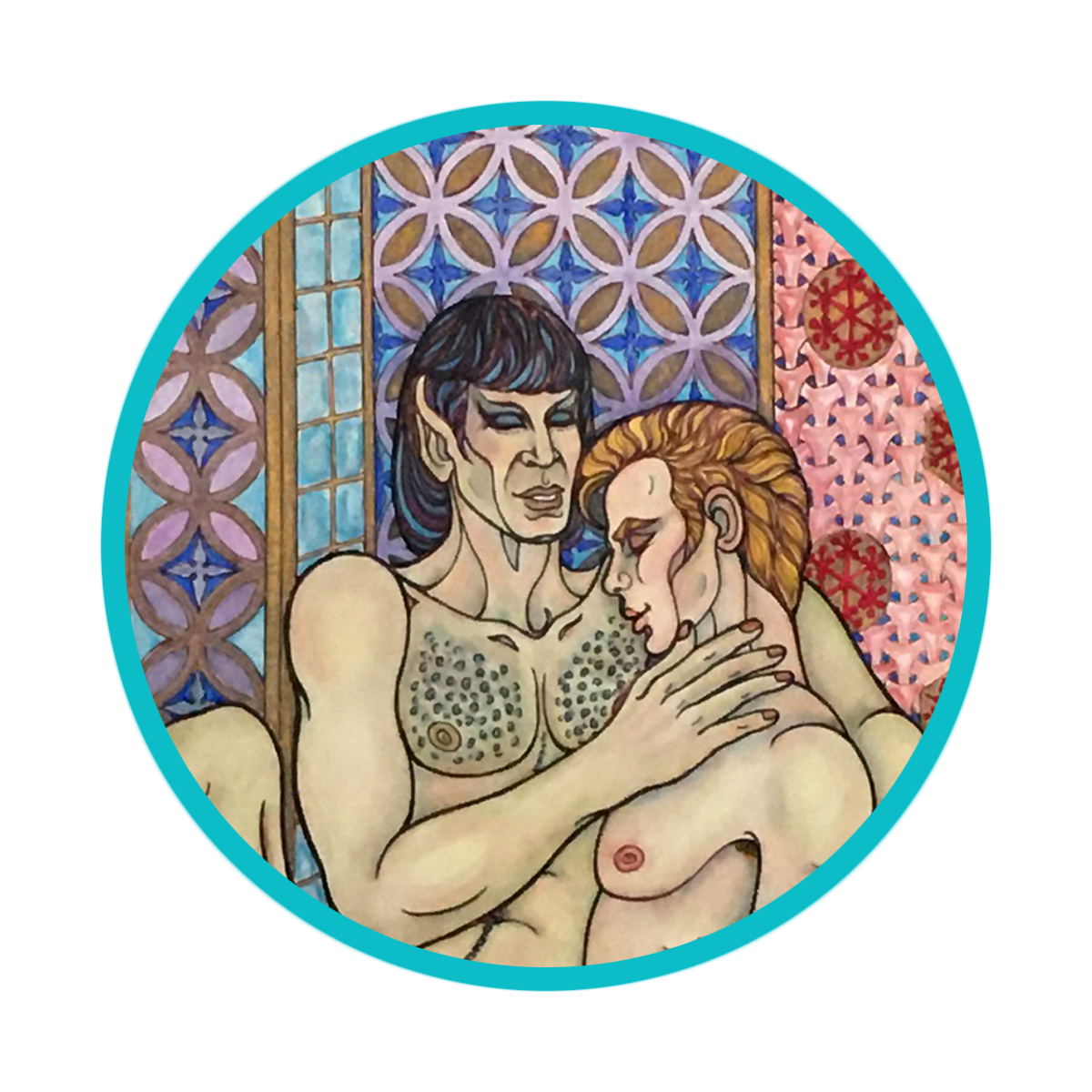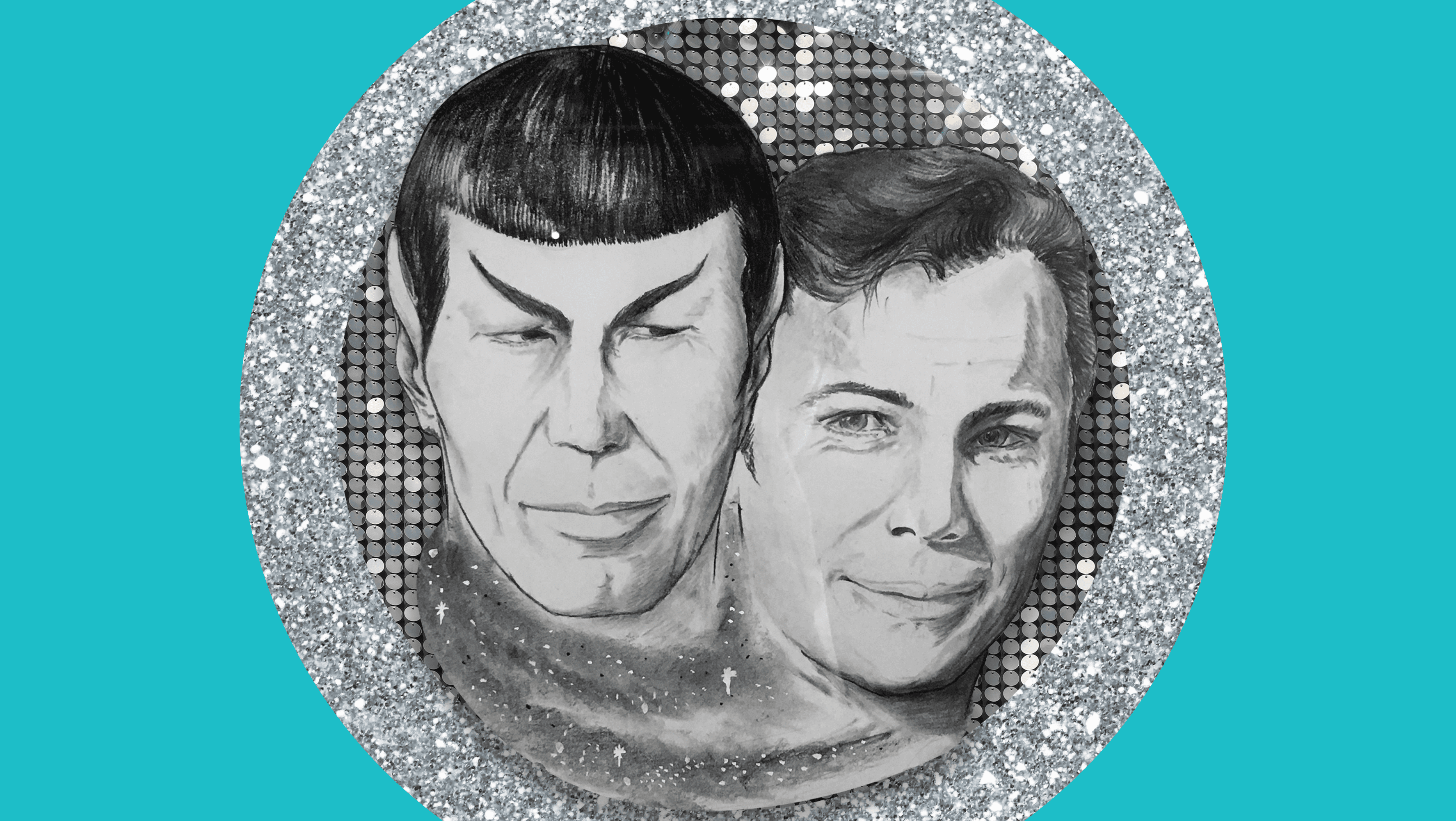Nowadays, if people want to see an ex-stormtrooper kiss a rebel fighter pilot—who are also baristas who turn into spies who turn into cats—they can. When it comes to fan art, the possibilities are unlimited. People don’t need to wait for Hollywood’s blessing: A wealth of options are available online, featuring thousands of characters in seemingly limitless situations, pairings and positions. But this wasn’t always the case.
For decades, fans have responded to the scarcity of LGBTQ2 representation in mainstream media with their own creations. They envision worlds that mirror and encompass their own desires, making art and writing stories that put (assumed) straight characters in queer situations. The practice of making new work based on existing media goes back centuries: Paradise Lost comes to mind, as does Dante’s Inferno and, well, the second half of the Bible. Most fans, however, peg the beginning of community-centric fan fiction creation to one couple: Kirk and Spock from the original 1966-69 series, Star Trek.
Starting in the 1970s, fans from around the country sent copies of amateur zines to each other featuring Kirk and Spock as a couple. Called “trades,” these zines included erotica, poetry, detective serials and even letters from one fan to another. Through art, writing and just plain small talk, fans could feel connected to each other even if they felt isolated in their own geographical communities. This was the case with Barbara P. Gordon.
According to the Fanlore wiki, Gordon was well-known among fellow Kirk/Spock fans, frequently contributing to conversations through letters to zine editors and editing her own zine for several years in the 1980s. After Gordon died in January 2018, her enormous collection of Kirk/Spock memorabilia—including dozens of pieces of original fan art and thousands of zines—made its way to a Chicago-area estate sale. That’s where Jenson Hillenbrand came upon it.

Jenson Hillenbrand has one of America’s biggest collections of ‘Star Trek’ fan art. Credit: Courtesy Jenson Hillenbrand
Although Hillenbrand’s not a huge Star Trek fan himself, he says he had a passing familiarity with slash fiction. Something compelled him to spend his savings on the collection. After a year of offering to donate the collection to local LGBTQ2 community centres, he put it up for sale (many of the pieces are still available) and displayed it for three weeks starting in January at a gallery called the Co-Prosperity Sphere in Chicago’s Bridgeport neighbourhood.
Xtra spoke with Hillenbrand about the collection, Gordon’s legacy and the power that comes from making community connections in an increasingly isolated time.
How did you find out about the collection?
I’ve always been into antiques and collectibles. I go every week to an estate auction in a strip mall in Carol Stream, a suburb of Chicago. One week, they were advertising a bunch of upcoming Star Trek stuff for sale. The owners of the estate sale were joking and talking about it. They said, “Oh, it’s Kirk and Spock having sex.” And I go, “Oh, I know what that is!”
It was the Barbara Gordon estate. They had all her Star Trek memorabilia—posters, slides and action figures. And then there was the slash artwork, and the trades. I think the owners said there were over 20,000 slash trades. Nobody else on the planet would have had that many in one place. She was the queen, you know?
What made you decide to buy all the art?
It could have all gone in a dumpster! Sometimes the counties just clear out the house and throw it in the trash. If it’s not a diamond ring, they’re not interested. But in the end, I wound up with all 74 art pieces she had. It ended up costing about USD $1,000.
But why you?

Credit: Courtesy Jenson Hillenbrand
All the regulars were in their “Make America Great Again” hats going back there, giggling and joking and making very ignorant comments. And I was sitting there, and I was like “I know what this is. I don’t know why, but I think I should get some of this and try and save it from these knuckleheads.”
I don’t have a lot—I’m on disability, I don’t have money, I got bills up the wazoo. But something in my gut was like, “We’re here, we’re members of the LGBT community, let’s try and save it from these goofs.”
I spent my whole savings. Everyone there was a little bit shocked. I guess everyone then assumed I was gay. I mean, I’m trans, but they know me as male. But whatever! I don’t care what they think of me. I don’t care what the MAGA guys think of me.
Are you a Kirk/Spock fan yourself?
I mean, I like Star Trek. But I don’t have any merchandise or anything.
I’m a huge M*A*S*H fan, however. I was talking to my best friend about this—we’ve known each other since we were 15—and he goes, “Well, there’s gotta be M*A*S*H erotica!” So I googled it, and of course there is! Of course there is!
What are some of your favourite parts of the collection?
The colour pieces, which are just so stunning. I love them just as much as the ones that are like a bad high school art class. They’re trying to draw so super, super well, to make it look like Kirk, and it’s just horrible! Anybody who’s ever been an artist or tried to draw, you know that feeling. You’re trying your best, and those I almost love more. The heart and soul that’s in those—they were just trying so hard to make the love they have for the characters and the love they have for the pairing come across. And everything in between!
My absolute favourite is a [black and white drawing] from a Christmas issue, where Kirk and Spock are in the nude and they’re stringing popcorn. That’s the other thing—there’s the explicit, and then there’s the domestic ones, the two of them in all [aspects] of life together. That’s so charming!

Credit: Courtesy Kat Jercich; Francesca Roh/Xtra
What has the response been like to the exhibition?
I couldn’t believe the range of people who came. There were people who were Star Trek fans, slash fans, interesting art fans. There is a slash renaissance happening now. There are token LGBTQ characters in pop culture—stressing the word “token”—but people are still participating in LGBTQ fandom and slash is popping up again, and so people are looking up the old stuff. The retro stuff!
There was a young girl, she flew all the way from New York City to see it. She’s a writer, she bought some pieces. This is like Mecca for her. It’s not like you can see a lot of this stuff at the library, or really online.
What’s the most memorable thing that happened during the exhibit?
One of the ladies who came to the exhibition was a mega fan, who brought trades for people to flip through. She’s part of a project to digitize every issue of every trade that’s ever been published. She’s got over 5,000 herself, and she’s working on scanning them all.
She showed me one of the last things Barbara ever wrote in a trade: “I have no one to leave my artwork to. No one will remember me. Hopefully, someone, one day will continue this work.” Just unbelievably, gut-wrenchingly sad.
So to see all the people at the show—all the people that want to carry it on. I’m not a spiritual person, I’m not a religious person. I don’t believe Barbara’s “watching,” or whatever. But I do think, “What the hell was compelling me?” I don’t know why, but something told me to save it.

Credit: Courtesy Kat Jercich; Francesca Roh/Xtra
As a member of the LGBTQ2 community, how do these fan works resonate with you?
Back then—there’s no Kinko’s. You would go to a printer and place your order and wait a week or whatever. If you’re not out, how are you going to copy that drawing or that story and go to the post office or the grocery store the next day? Where are you going to get that printed professionally and still keep your job in the ‘70s and ‘80s? You could get arrested for obscenity, like Larry Flynt! You could go to jail.
What I most identify with is the idea of fear: Of being really loving and passionate about something and having to take it underground. They’re people who understand that fear and the need to hide away when they really want to shout about this love that they think is so beautiful from the rooftops, and they can’t.
The idea that now it’s in an art gallery, that now it’s online—that part of the world being better is what’s amazing to me.
I wish Barbara was here to get her last hurrah. I hope that I’ve done her last hurrah justice. Hopefully, she knew in her heart there were people who cared about her and cared about her work.
Some of the interview has been edited and condensed.


 Why you can trust Xtra
Why you can trust Xtra


